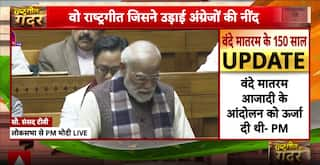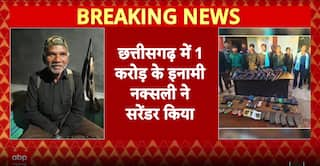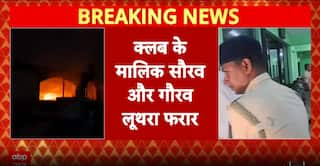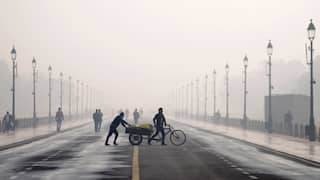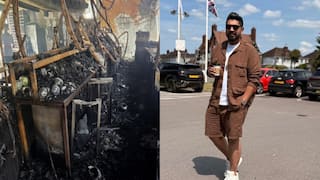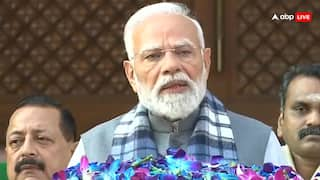Ritual Gone Wrong? When 11 Members Of A Family Were Found Dead — 10 Of Them Hanging — In Chilling Delhi Tragedy
On July 1, 2018, 11 members of a Delhi family were found dead in their home in mysterious circumstances. Viral videos from the scene showed 10 bodies hanging, gagged, blindfolded and with bound limbs.

Most Shocking Crimes: What began as an ordinary day for many in the bustling neighbourhood of Delhi's Burari area on July 1, 2018, soon turned into a scene of unimaginable horror as news emerged of multiple deaths within a single household. In this week's edition of ABPLive's 'Most Shocking Crimes', we remember the chilling Burari 'House of Horrors' case, where 11 members of the Chundawat family, also known as the Bhatias among neighbours, were found dead in their two-storey house in Sant Nagar.
Police arrived at the property at about 7.30 am on the fateful Sunday after receiving a call from a neighbour who had made the grisly discovery. On arrival, they found 10 bodies hanging in a circular formation, reportedly to imitate the 'ropes' or prop roots of a banyan tree. They were identified as Bhavnesh Singh (50); his brother, Lalit Singh (45); their wives, Savita (48) and Tina (42), respectively, and their children Neetu (25), Monu alias Maneka (23), Dhruv alias Dushyant (15) and Shivam (15), as well as Lalit and Bhavnesh's sister Pratibha alias Baby (57) and her daughter Priyanka (33).
According to the police report, Pratibha was found hanging at a little distance from the group. The matriarch of the family, 77-year-old Narayani Devi, was found dead on the floor in the adjacent room. Police said they found no signs of forced entry into the house.
Head constable Rajeev Tomar, the first policeman to enter the Burari house, described the crime scene as the most "shocking" he had witnessed in 17 years of service. “In my career of 17 years so far, I have never seen a crime scene like this and I hope I do not ever have to,” Tomar told The Hindu.
“It was shocking. I stayed only for 10-15 seconds before rushing downstairs to call my seniors. At the time, I did not see whose hands were tied and whose eyes were covered. I just saw a lot of bodies hanging, just like branches of a tree,” Tomar said.
What Happened?
Prima facie, police suspected it to be a case of murder because the family members' hands and legs were tied, they had blindfolds on, and were gagged. However, what changed the course of the investigation was the discovery of 11 diaries with notes detailing the scene as part of a purported ritual. In a statement, investigators said they had found handwritten notes that pointed “towards observance of some definite spiritual or mystical practices by the whole family”.
Based on the notes in the diaries, the police suspected it to be a case of a ritual gone wrong.
The notes were reportedly found to have been dictated by Lalit, who believed the 'spirit' of his father Bhopal Singh, who died in 2007, was communicating with him and instructing him to perform 'badh tapasya [banyan tree worship]’ for the betterment of the family. In August 2019, a handwriting analysis confirmed that the entries in the diary were made by the occupants of the house.
“Prima facie we treated it as a murder case. Later, we thought there might be some outsider who had influenced or abetted the family members to perform the puja that resulted in the deaths. However, no external influence was found. After going through notes recovered from the house and the CCTV footage which showed family members arranging stools and ordering food for the puja, it was established that Lalit was the only person who made all the other family members perform the puja. The others volunteered,” The Hindu quoted then DCP (Crime) Joy Tirkey as saying.
But the question that has perplexed the investigators and many others was how all the family members agreed to tie a noose around their neck and believed they would survive the alleged ritual.
A doctor at VIMHANS (Vidyasagar Institute of Mental Health, Neuro & Allied Sciences) told police it was a case of “shared psychosis”, in which one person’s delusional beliefs are transmitted to others, The Hindu reported.
'Daddy Has Returned'
Originally from Rajasthan, the Chundawat family moved to Delhi in 1989-90. Initially, Bhopal Singh, his wife Narayani Devi, and their youngest son Lalit moved to the city. In 1993, Bhopal Singh summoned his other two sons to the capital from Rajasthan, but only Bhavnesh, his wife Savita and Neetu came.
Bhopal Singh’s lone surviving son Dinesh Singh Chundawat, a building contractor in Chittorgarh, said he did not shift to Delhi at the time because of their roots in Rajasthan. “I did not go because I met with an accident in 1992 and was on bed for about 12 months. My work in Rajasthan was also prospering,” Dinesh told The Hindu.
The family had lived in their home in Burari for nearly three decades and had celebrated Priyanka's engagement two weeks before the mass deaths.
Lalit, who is at the centre of the macabre tragedy, has been described as "funny, reserved, responsible, and authoritative" by his friends and family.
Talking to The Hindu, Chander Prakash Mehta, identified as Lalit’s best friend since 1989, said the latter was no stranger to challenges. Mehta, according to the report, studied medicine at a private college in Hisar with Lalit.
“Lalit was a year senior in Inter College but he could not take exams in the junior year because he met with an accident. He had to repeat the year. In the senior year, during examinations, he fell ill again. He had to drop out,” Mehta was quoted as saying.
In 2004, the report said, Lalit had a major accident when he was pushed under several sheets of plywood and his shop set on fire. Lalit lost his voice in the incident. However, things began to change after his father died of respiratory illness in February 2007.
On one of the 10 days after his father's death, while family and friends were sitting for ritual prayers, Lalit suddenly started chanting Om. "His voice came back and everybody said ‘Daddy aa gaye [Daddy has returned]',” a neighbour told The Hindu.
When a neighbour reportedly asked Lalit how he regained his voice, he said his father came in his dream and asked him to perform a puja. The family also started organising daily kirtans at their house soon after Bhopal Singh’s death.
“Every night, around 9 pm, they would sit together and pray for 15-30 minutes. The kids used to tell me ‘Daddy ke aane ka time ho gaya [it is time for grandfather to come]',” a neighbour was quoted as saying, adding that Lalit conducted the kirtans by sitting in front of his family. Over the years, he took the place of Bhopal Singh in the family.
Police's Closure Report
After over three years of probe, the Delhi Police Crime Branch filed its closure report in the case in June 2021, declaring that no sign of foul play was detected, according to a report in The Times of India.
In its report, police said that notes recovered from the house detailed the manner in which the hanging was to take place. CCTV footage showed no other person entering the house on the day of the incident besides the occupants, the Times of India report noted.
The police concluded based on a psychological autopsy that the 11 people might not have intended to die but expected to return to normal life after the ritual. The diary entries indicated that Lalit firmly believed his dead father was communicating with him and asking him to perform certain rituals that would benefit the entire family. He convinced his family to take part in the ritual.










